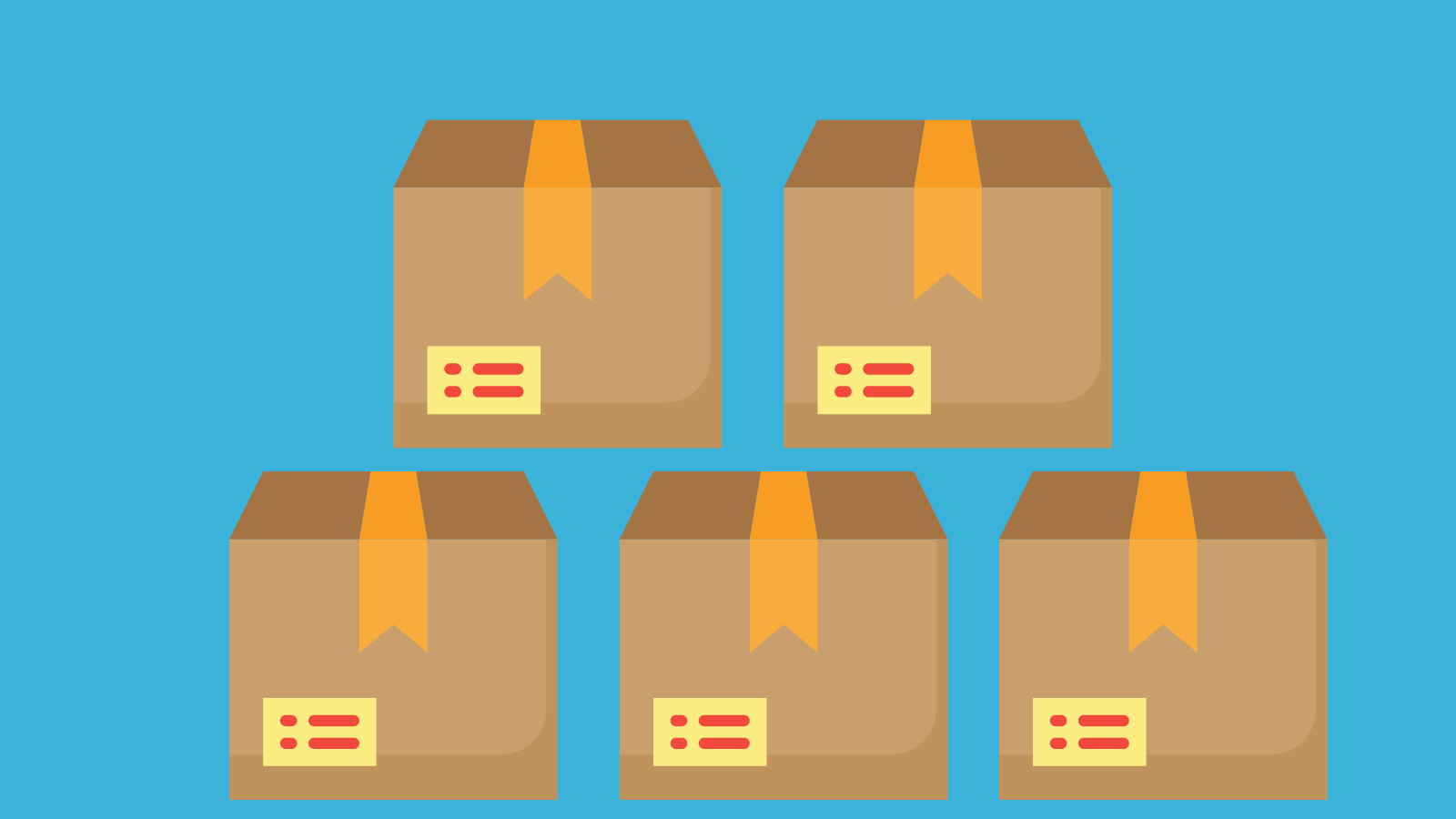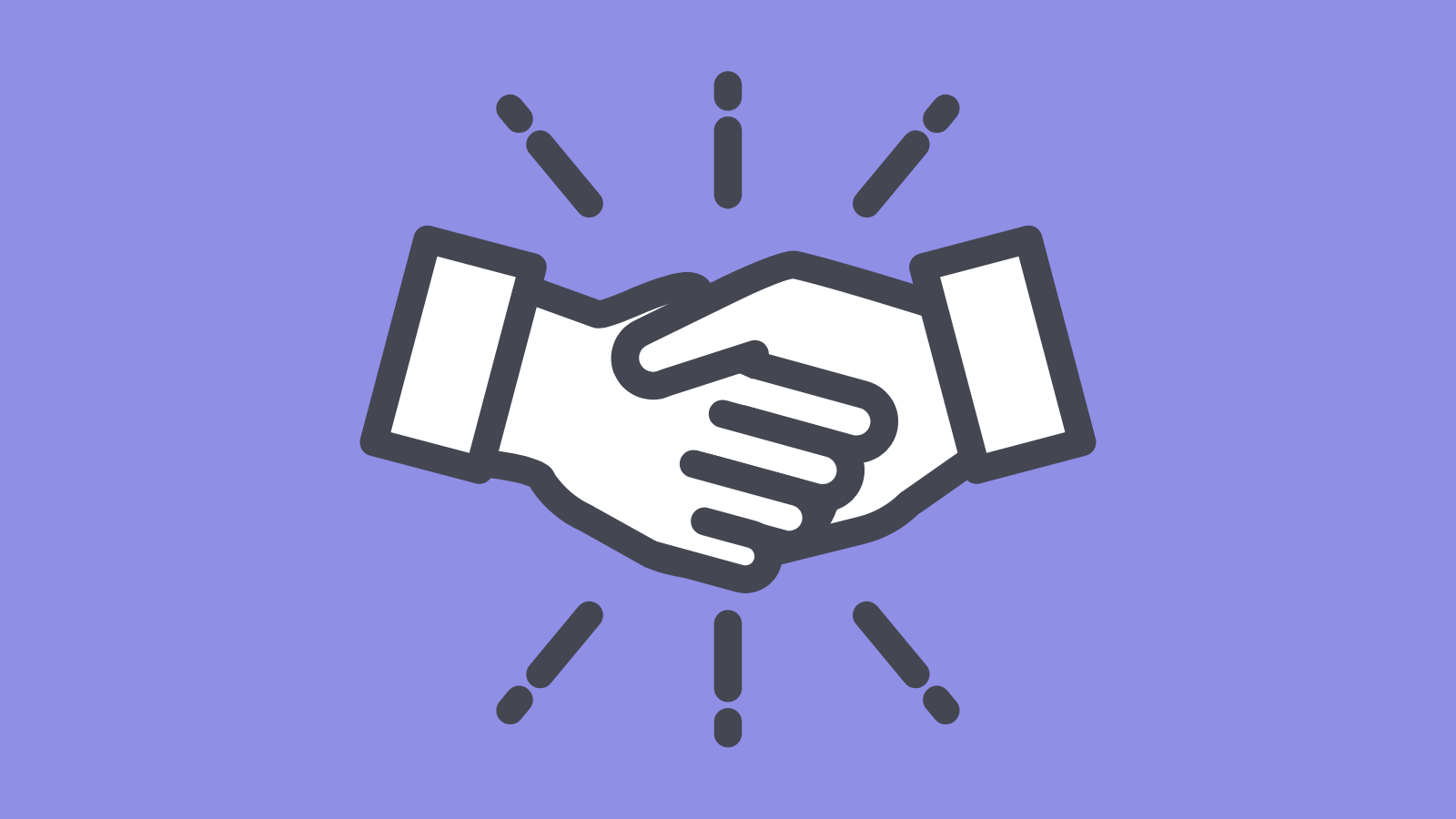What is Dropshipping?
Dropshipping is a growing ecommerce business model that allows store owners to sell products wholesale without needing to store inventory or have a physical storefront. Dropshippers source items from manufacturers, then market and sell them on their own online store. When a customer orders a product, the manufacturer will ship it from their warehouse, straight to the customer’s doorstep. A popular subset of dropshipping is print on demand, which is primarily used for T-shirts and other design-oriented merchandise. This business model has become more popular during the pandemic as a way to earn money from home.
Advantages of Dropshipping
Dropshipping has plenty of advantages for new entrepreneurs who want to start an ecommerce business with limited risks and upfront costs. These include:
Low Barrier to Entry
Any new business requires entrepreneurs to invest money and resources to get started. With dropshipping, startup costs are low, there’s no need for inventory storage space or shipping logistics, and you can operate an ecommerce store from anywhere. It’s a very easy business to start.
No Inventory or Shipping
Perhaps the biggest advantage of operating a dropshipping business is that you as the retailer don’t have to store inventory, find a warehouse, or manage the storage of the inventory. You also won’t be held responsible for damage to the items or take losses from ordering items that don’t sell. Not having to worry about shipping and order fulfillment is another huge advantage. Many dropshipping suppliers charge shipping fees, but you’ll still save money and effort compared to handling it yourself.
Low Overhead Costs
You won’t have to deal with the expense and effort of storing and shipping products, so you can keep prices down and keep more profits for yourself. If you’re not quite ready to start storing your own products, dropshipping could be for you.
Low Risk
Dropshipping is a very low risk ecommerce business model. Unlike more traditional ecommerce businesses, there’s no need to invest thousands of dollars into the products you’re going to sell. Your supplier has them on hand and you don’t have to pay until a customer places an order. This limited risk also makes dropshipping a great way to try out selling new products in an existing store.
Flexibility and Scalability
Dropshipping is a scalable business model. That means you can sell as many or as few dropshipping products as you want. Whether it’s your full-time job or just a side hustle, you can make it work for your budget and schedule.
Drawbacks of Dropshipping
No business model, or anything else for that matter, is all pros and no cons. Here are some of the potential drawbacks of the dropshipping model:
Low Profit Margins
The other side of the coin to low overhead is low profit margins. Sure, you put less money into a dropshipping business, but you also get less money out. That means you have to sell a lot of products to turn a profit after covering marketing costs, website maintenance, and other related expenses.
High Competition
Low barrier to entry means more competition. The more popular the niche, the more likely it is to be saturated. Since bigger companies can afford to reduce their markups the most, it can turn into a race to the bottom that makes it hard for small businesses to compete. Since dropshippers rarely have exclusive contracts with their suppliers, customers can often buy the exact same products that you sell cheaper from a bigger company.
Lack of Quality Control
Outsourcing warehousing and fulfillment to your dropshipping suppliers may make running your business easier, but it also means products go directly to your customers without you assuring the product quality.
This also means it’s up to your supplier to get products out on time and in one piece. However, since you’re the outward-facing representative of the company, customers will blame you for shipping delays and damaged products.
Frequent Returns
With online shopping, returns are inevitable. The dropshipping business model is prone to higher return rates than traditional online retail businesses because dropshipping suppliers can be unreliable and they all handle returns differently.
Some suppliers are willing to take products back and pay for return shipping, but don’t count on it. With some suppliers, you may have to purchase a new product on the customer’s behalf and cover the shipping expenses out of pocket.
Shipping Costs
Shipping expenses can add up quickly with the dropshipping business model, especially when you use multiple suppliers. For example, if a customer orders a T-shirt and a pair of leggings from different suppliers, you’ll have to pay for each individual shipment instead of paying for both items grouped together.
This can add up over time and make it hard to make up for the added expenses. After all, raising the shipping costs for the customers will likely turn them off from purchasing from you in the first place. The best way to avoid this issue is limiting your number of suppliers. It’s a good idea to focus on suppliers that carry a wide range of products so you don’t have to go elsewhere if you decide to branch out.
![]()
How to Make Dropshipping Worthwhile
Dropshipping may not be worth it for every aspiring entrepreneur, but there are steps you can take to make it worth it for you. If you’ve weighed the pros and cons of dropshipping and have decided to move forward with it, follow this advice.
Have a Unique Value Proposition
Since dropshipping is so competitive and often involves several companies selling identical products, it’s important to stand out. What makes your dropshipping online retail business different from the others? Some examples of ways to differentiate your online retail business include:
- Customer experience
- Eco-friendly practices
- Products and designs you can’t find anywhere else
- A specific dropshipping niche
Once you’ve articulated your unique value proposition, use it in your marketing strategy.

Partner with Reputable Dropshipping Companies
How can you tell if your supplier is reputable before you commit? Here are a few factors to keep in mind:
How Long Have They Been in Business?
If it’s less than two years, they’re probably not a good fit for beginners.
How Popular Are Their Items?
On most dropshipping marketplaces it’s pretty easy to find the previous sales volume of the items you want to sell. Hot sellers are usually safer investments for beginners, but over time you may be able to successfully market and sell less popular items.
Can You Make a Profit With Their Prices?
Before you commit to a supplier, evaluate the following to see if you can reasonably make a profit:
- Each item’s wholesale costs
- Credit card processing fees
- Shipping costs
- Suggested pricing
How is the Product Quality?
The quality of dropshipping products can vary quite a bit. You want to check it out for yourself before you commit to selling. You can get a good idea of the item quality from ordering samples, the sales numbers, and the marketplace supplier ratings.
What Country Are They Based In?
Supplier location is a huge factor for your shipping times and costs. Many dropshipping suppliers are based outside of the United States, particularly in China. If you decide to work with an overseas supplier, work with one that provides ePacket shipping for faster, trackable deliveries.
How Good is Customer Service?
Most people don’t think about customer service until they have a problem. Since a supplier contract is a long-term relationship, it’s a good idea to test the customer service before you commit to them.
Are They Reliable?
It can be hard to judge a supplier’s reliability without actually working with them, but there are ways to get a good idea. Reading the reviews from other retailers is a good place to start. Using a supplier marketplace as opposed to an individual vendor is also a good way to find reliable suppliers. Most marketplaces don’t keep working with vendors who have well-known quality and service problems.
Is Their Return Policy Reasonable?
Dropshipping suppliers handle returns in a variety of ways. Some dropshipping marketplaces use no-return refunds, but this isn’t universal for dropshipping marketplaces and vendors. Be sure you understand how returns work for any supplier you’re considering before you have a return yourself.
.png?width=1600&name=Warehouses%20with%20large%20boxes%20stacked%20outside%20(1).png)
Spend a Significant Amount of Time and Resources on Marketing
No one will know about your dropshipped products unless you spend time and money on getting the word out there. Easy ways to promote your online store as a small business owner include:
- Social media
- SEO
- Pay Per Click ads
- Influencer marketing
- Email marketing
- Content marketing
Offer Excellent Customer Service
Depending on how much time you spend on your business, you can either respond to customer service requests as they come in or set aside a time each day to respond to them. You can do this with customer support email tickets, but investing in live chat is a great way to solve customer support issues quickly and keep the customer.
Live chat platforms also give you an opportunity for calls to action. For example, when you’re done solving the user’s problem, you can prompt them to fill out a customer satisfaction survey, sign up for your email list, or even give them a discount on the item in question.
.png?width=1600&name=A%20pattern%20of%20megaphone%20graphics%20(1).png)
Test Products Before You Commit
Most suppliers offer samples of their products so you can assure the product quality before you start shipping them out to customers. Take advantage of this and try using the products yourself. Would you use it in your everyday life?
Stay on Top of the Trends
Looking at Twitter, Google Trends, and news sources to find out what products people get excited about online is a great way to stay on top of trends and get in early on popular niches as a dropshipper.
Build a Well-Designed Website
It probably won’t surprise you to learn that some dropshipping stores are scams. The most effective way to differentiate yourself from those scams is to use good web design. Using a website builder is the easiest, most affordable way to create a professional-looking website that will appeal to potential customers.
.png?width=1600&name=Four%20hands%20putting%20website%20elements%20in%20their%20places%20on%20a%20website%20(1).png)
Popular Products for Dropshipping
You can use dropshipping for a wide variety of products from clothing to tools. Here are some items that are good fits for the business model:
- Electric Toothbrushes
- Melatonin Gummies
- Massage Guns
- Yoga Mats
- Skincare Products
- Leggings
- Silicone Rings
- Backpacks
- Portable Blenders
- Thermoses
- Blankets
- Smart Lights
- Tools
- Phone Cases and Accessories
- Gaming Accessories
- Baby Products
- Pet Care Products

Alternative Dropshipping Ideas
One of the cool things about the dropshipping business model is that it doesn’t have to be your entire business. There are a few different ways to incorporate dropshipping into a more traditional retail business.
Sell Dropshipped Products Alongside Your Own Products
Dropshipping works great as a supplement to selling your own products. This could either be temporary to try out expanding your product line or a longer term addition to your product catalog.
For example, if you sell body scrub that you make out of your home and want to sell loofahs to go with it, you could dropship the loofahs to gauge demand. Selling dropshipped products as a supplement rather than your entire business lets you benefit from the simplicity of the business model without relying entirely on suppliers.
Having a few dropshipped products will keep your site from becoming fully dependent on your supplier, and you can still benefit from the simplicity of the model without relying on it for your store’s profits.

Sell Dropshipped Products as an Additional Income Stream
You can also use dropshipping, often specifically print on demand, to sell merchandise for your business or products that pair well with your services. For example, if you’re a personal trainer, you can sell dropshipped exercise equipment or clothing to your customer base. This is another way to use dropshipping on the side as opposed to relying on it exclusively for your business.

Sell Traditionally But Outsource Your Shipping
If you have too much inventory to store in your garage and don’t have the time and transportation to pick and ship products from a warehouse, this might be the option for you. Outsourcing shipping and order fulfillment to providers like Shipwire and Fulfillrite, you can sell your own products and still have someone else take care of the shipping. The biggest downside to this arrangement is that it can get expensive. Be sure to crunch the numbers and decide if the convenience is worth it.

Legal Requirements for Dropshipping
Though dropshipping is a legal business model, there are still ways you can get into trouble if you don’t have the proper licensing. Here are all of the things you need to legally protect your dropshipping business.
Register Your Business Structure
The business structure you register as determines how your business is taxed and viewed by the government. The options are:
- Sole Proprietorship
- Partnership
- Limited Liability Company (LLC)
- S Corporation (S-Corp)
- C-Corporation (C-Corp)
Most dropshipping store owners register as sole proprietorships or LLCs. Here are some pros and cons of each to help you decide which one is right for you
Sole Proprietorship
|
Pros |
Cons |
|
Easy to start |
Owner is personally liable for business debts |
|
No required paperwork |
More difficult to get a business loan |
|
Easier to file taxes |
|
|
Don’t need an Employer Identification Number (EIN) |
LLC
|
Pros |
Cons |
|
Owners don’t have personal liability for business debts |
More expensive to register than than sole proprietorships and partnerships |
|
Owners can choose if they want to be taxed like a partnership or a corporation |
|
|
Fewer formalities than corporations |
If you don’t register your business in your state, it’s considered a sole proprietorship by default.
Taxes
How your sales taxes as a dropshipper in the United States depends on which state you live in. There are two kinds of states for sales tax laws: origin-based and destination-based. If you operate your business in an origin-based state, you have to charge sales tax at the rate where your business is based. If you operate in a destination-based state, the sales tax rates are based on the customer’s location.
Contracts
A dropshipping partner agreement protects you if anything goes wrong and ensures that you and the supplier each hold up your end of the deal. You can draft one up with the assistance of a lawyer.
Policies
A trustworthy dropshipping store needs a privacy policy, a shipping policy, and a returns policy. Potential customers may view these policies when they’re considering a purchase to help decide if your store is legitimate.
Insurance
As your dropshipping business gets bigger, so do the risks. Investing in business insurance ahead of time can protect you from a variety of risks associated with your business.
Choosing Suppliers
Sourcing products is one of the most time-consuming dropshipping startup steps. Fortunately, that time and effort pays off with a profitable partnership. There are two ways to find suppliers in the dropshipping industry: dropshipping marketplaces and sourcing directly through suppliers.
Dropshipping Marketplaces
The easiest way for beginners to get started with dropshipping is to look them up in an online marketplace. These platforms host thousands of sellers and make it easy to find and evaluate the millions of products between them. The best dropshipping marketplaces include:
- DSers
- Alibaba/AliExpress
- U.S. Direct
- Doba
- Modalyst
- Spocket
- Printful
- SaleHoo
- Worldwide Brands
- Megagoods
- Wholesale Central
Sourcing Directly Through Suppliers
Though using a dropshipping market is the easiest choice for beginners, direct sourcing can lead to higher profit margins. Many dropshippers start doing this by forming relationships directly with vendors they’ve worked with on dropshipping marketplaces. You can also find wholesale suppliers through resources like…
ThomasNet
A database of US manufacturers with a catalog of over 6 million products.
ImportGenius
An import/export data hub you can use to find wholesale suppliers or directly import wholesale goods.
Buyer’s Markets
Industry-specific buyer’s markets are a great place to find products specific to your niche. Some digital marketplaces like America’s Mart, Dallas Market Center, and NY Now also host in-person events.
Private Label Sellers
Some private-label manufacturers also offer dropshipping programs. They’re especially popular for cosmetics, personal care, and clothing.

Dropshipping for Beginners: FAQs
If you have questions about dropshipping, we’ve got answers!
Is Dropshipping Profitable?
Dropshipping may look like a get-rich-quick scheme. While the claims of easy money and effortless sales are exaggerated, you can make profit as a dropshipper if you understand the risks involved and have a solid business plan.
What is the Biggest Risk in Dropshipping?
Unreliable shipping partners are the riskiest aspect of dropshipping. With the dropshipping model, you don’t control the shipping, fulfillment, and inventory management, but your reputation is on the line if something goes wrong. Finding reliable partners when you’re first getting started can save you a lot of trouble in the long run.
How Does Dropshipping Work?
Dropshipping an order fulfillment method where the retail merchant does not hold any product inventory. When a customer orders a product, the dropshipper orders the same item from a dropshipping supplier. The supplier then ships the order directly to the customer. The dropshipper doesn’t see or touch the actual product in this process.
.png?width=1600&name=Clusters%20of%20question%20marks%20(1).png)
Is Dropshipping Worth It?
Dropshipping can be a profitable business model, but like any business success is not guaranteed. The business model has a low barrier to entry and no need to spend a lot of money on purchasing and storing inventory. You can get started as long as you have a computer and an internet connection. However, it’s important to know the risks, keep your expectations reasonable, and plan accordingly.
What's a good alternative to dropshipping?
If you don’t want to use dropshipping for your entire business, one easy alternative is to sell traditionally and outsource your shipping. In this arrangement, a fulfillment partner handles your warehousing and shipping processes. You can get a similar type of freedom you find with dropshipping. Another great way to try dropshipping without going all-in on it is to use it as an add-on to your business.
Do Dropshipping Stores Ship Internationally?
Most dropshippers choose to ship internationally to reach a larger audience, but it’s not required. Even if you only plan to ship domestically now, it’s a good idea to work with suppliers that offer international shipping as an option in case you decide to offer it in the future.
Can I Combine Dropshipping with a Business I Already Own?
The dropshipping business model is easy to combine with other ecommerce businesses. Plenty of ecommerce business owners dropship some products but not others. For some of these business owners, this is a way to test the waters before they expand their product offerings, for others, the dropshipped items become permanent parts of their catalogs.
.png?width=1600&name=A%20person%20holding%20up%20a%20piece%20of%20paper%20with%20a%20question%20mark%20(1).png)
Do I Need to Register a Business Entity to Dropship?
You’ll need to register your business once you start to make sales because most payment providers require proof of business entity to work with them.
Is Dropshipping Allowed on eBay?
Yes, eBay has a dropshipping program.
Is Dropshipping Allowed on Amazon?
Yes, there is an Amazon dropshipping program.
Is Offering Bulk Discounts a Good Idea?
Bulk discounts are a great way to attract customers to your online business, when you don’t have much brand recognition yet. Offer discounts for products that will still bring profit at a discounted price. Think about profit margins for the different products in your niche and be sure to include products with high profit margins.
How Sav Can Help
Here at Sav, we’re dedicated to helping entrepreneurs and small business owners succeed online with a custom domain name and your own beautiful website. No matter what you sell, which suppliers you partner with, or who your audience is, we make it easy to build and manage your website. Find out how today!
Newsletter
Popular
Top Articles
Categories
topics on the blog
Recommended articles
How to Come up With Ecommerce Product Ideas
Whether you’re starting a new ecommerce business or expanding a pre-existing one, what products to sell online is an important decision....
Read moreHow to Create a Modeling Portfolio
What is a Modeling Portfolio? A modeling portfolio is a demonstration of your skills and talent you can show to potential employers and...
Read moreThe Best Side Hustles From Home to Try
Why Start a Side Hustle from Home? Earn Extra Money Being alive is expensive right now. Whether your financial goals are to pay off your...
Read more

.png?width=1600&name=Diagonal%20Rows%20of%20Money%20Bags%20(1).png)


